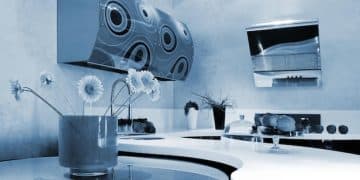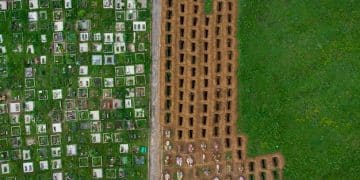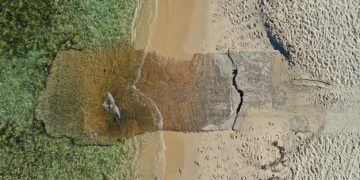Water Conservation: Reduce Household Water by 25% Effortlessly
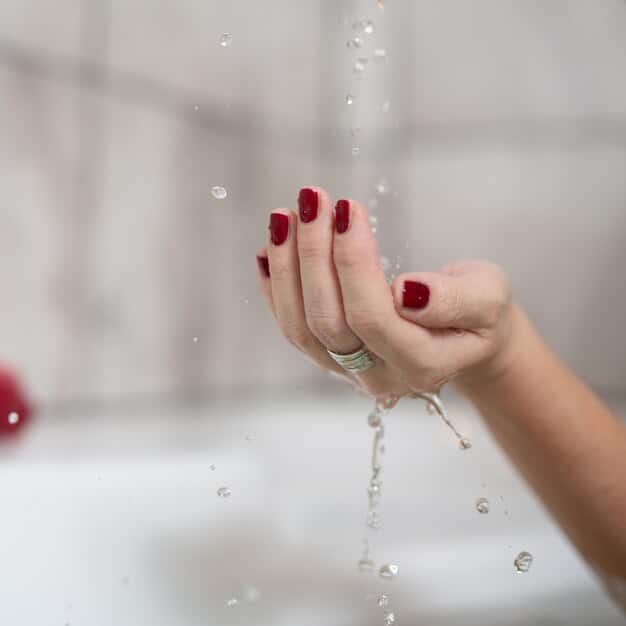
Achieving a 25% reduction in household water usage is entirely feasible through strategic appliance upgrades, mindful daily habits, and proactive leak detection, offering substantial environmental and financial benefits for homeowners.
In an era where environmental consciousness is paramount, understanding the intricate relationship between our daily habits and global resource preservation has never been more critical. When it comes to managing vital resources, water stands out as undeniably indispensable, yet often taken for granted. While many recognize the broader implications of water scarcity, translating that awareness into actionable household changes can be a challenge. This article delves into practical, effective strategies for <water conservation: reduce your household water usage by 25% with these simple strategies>.
Understanding Your Water Footprint
Before embarking on a journey of significant water reduction, it’s essential to grasp what a “water footprint” truly signifies. Far beyond just the water you visibly consume through taps and showers, your water footprint encompasses the direct and indirect water used to produce all the goods and services you consume. This includes everything from the food on your plate to the clothes you wear and the energy that powers your home.
In a typical American household, water usage can be surprisingly high, often exceeding what many might imagine. On average, each person uses about 80-100 gallons of water per day indoors. Toilet flushing, showering, and laundry represent the largest indoor water consumers, while outdoor irrigation can significantly inflate overall usage, especially in drier climates. Recognizing these primary consumption areas is the first step toward effective conservation initiatives.
Breaking Down Average Household Water Use
To truly understand where your efforts will yield the most impact, it’s helpful to quantify typical household water allocation. Examining how water is distributed across various activities allows for targeted interventions rather than broad, less effective approaches.
- Toilets: Accounting for roughly 24% of indoor water use, older, inefficient models are particularly wasteful. flushing is often the single largest use of water in a home.
- Showers: Approximately 20% of indoor water consumption comes from showering. The length of showers and the efficiency of showerheads directly influence this percentage.
- Washing Machines: Laundry can use about 17% of indoor water. Older machines, especially those not Energy Star-rated, consume significantly more water per load.
- Faucets: General faucet use, including handwashing and dishwashing, accounts for about 19%. Leaky faucets can also add significantly to this total over time.
- Dishwashers: Around 1% of indoor use. Modern dishwashers are surprisingly efficient compared to handwashing, especially if run only when full.
Mapping your household’s unique water consumption patterns can be achieved through reviewing utility bills, which often provide a detailed breakdown, or by conducting a simple home water audit. Many utility companies offer online tools or resources to help consumers monitor their usage and identify potential areas for improvement. This initial assessment provides the necessary baseline from which to measure your 25% reduction goal.
Understanding these figures isn’t just an academic exercise; it empowers you to prioritize your conservation efforts where they will have the most significant effect. For instance, if your household has older toilets, upgrading them could single-handedly account for a substantial portion of your targeted reduction, making it a highly impactful first step.
Immediate Wins: Simple Habit Adjustments
Achieving a 25% reduction in household water usage often begins not with significant investments, but with a conscious shift in daily habits. These small, consistent changes require minimal effort but collectively yield substantial savings over time. Implementing these adjustments can immediately set you on the path to your conservation goals without incurring upfront costs.
Mindful Bathroom Routines
The bathroom is arguably the prime location for water waste, but it also offers the greatest potential for immediate savings. Simple modifications to your showering and hygiene habits can dramatically cut down on consumption.
- Shorter Showers: Reducing shower time by just a few minutes can save gallons daily. Aim for 5-minute showers instead of 10-15 minute ones.
- Turn Off the Tap: While brushing teeth or shaving, turn off the faucet. Letting it run idly can waste several gallons each minute.
- Full Loads Only: When doing laundry, ensure your washing machine is fully loaded. Running partial loads is inefficient and consumes unnecessary water. Newer machines often have load-sensing features that adjust water levels, but a full load is always optimal.
Consider the cumulative effect of these actions. If every household member shortens their shower by two minutes daily, the collective savings over a month can be immense. Similarly, preventing a faucet from running while brushing teeth might seem trivial for a single instance, but over a year, it translates into hundreds, if not thousands, of wasted gallons.
Kitchen and General Household Practices
Water conservation extends beyond the bathroom into the kitchen and other areas of your home. Many daily activities, if undertaken mindfully, can contribute significantly to overall water reduction.
When washing dishes by hand, avoid letting the water run continuously. Instead, fill a basin with soapy water for washing and another with rinse water. This method drastically cuts down on the amount of water needed. For those with dishwashers, optimizing their use is key. Always run your dishwasher only when it is completely full, and choose the most efficient cycle available. Modern dishwashers are designed to be extremely water-efficient, often using less water than handwashing a similar load.
In the general household, being vigilant about waste is paramount. This includes avoiding the use of running water to thaw frozen foods; instead, plan ahead and thaw them in the refrigerator overnight. Additionally, ensure that garbage disposals are used judiciously, as they require a significant amount of water to operate effectively. Composting food scraps instead of grinding them can further reduce water usage and benefit your garden.
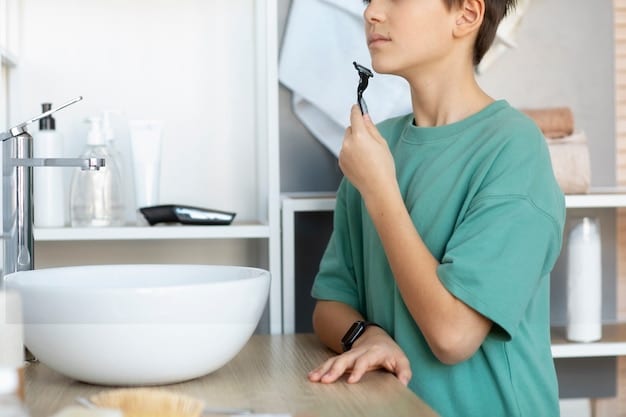
Even small leaks, such as a dripping faucet or a running toilet, can amount to thousands of gallons of wasted water annually. Regularly check for these silent culprits. A simple check for a leaky toilet involves adding a few drops of food coloring to the tank; if the color appears in the bowl without flushing, you have a leak. Addressing these issues immediately, even if it seems minor, delivers significant long-term water and cost savings. These immediate adjustments lay the groundwork for more substantial water-saving measures.
Smart Upgrades: Investing in Efficiency
While immediate habit changes offer quick wins, investing in water-efficient appliances and fixtures provides long-term, sustainable water savings. These smart upgrades, often certified by programs like Energy Star or WaterSense, significantly lower your household’s overall water consumption with minimal daily effort once installed. The initial investment is typically recouped through reduced utility bills over time, making them a financially sound decision.
High-Efficiency Fixtures and Appliances
Targeting the highest water-consuming areas in your home for upgrades can yield dramatic results. The technology embedded in modern water-efficient products is designed to deliver the same performance with significantly less water.
- Low-Flow Showerheads: Replacing old showerheads with WaterSense-labeled models can reduce shower water usage by 40% or more, without compromising water pressure. Many offer different spray settings for a customized experience.
- High-Efficiency Toilets: Toilets manufactured before 1992 can use up to 7 gallons per flush (GPF). Modern high-efficiency toilets (HETs) use 1.28 GPF or less, often featuring dual-flush options. Upgrading can cut toilet water use by over 60%.
- Smart Irrigation Systems: For outdoor watering, smart irrigation controllers use local weather data, soil moisture sensors, and plant type information to optimize watering schedules, preventing overwatering and runoff. These systems can lead to significant outdoor water savings.
When selecting these upgrades, always look for the WaterSense label, which indicates that the product meets strict water-efficiency criteria without sacrificing performance. This ensures you’re investing in proven technology that performs as expected while delivering substantial water savings.
Considering Larger Appliance Investments
Beyond fixtures, major appliances play a substantial role in household water consumption. Upgrading older models to high-efficiency versions can have a profound impact, especially on your laundry and dishwashing water footprint.
When your old washing machine or dishwasher reaches the end of its lifespan, consider replacing it with an Energy Star certified model. Energy Star washing machines use about 25% less energy and 33% less water than conventional models. Front-loading machines are generally more efficient than top-loaders, using less water per load and spinning clothes drier, which also reduces energy consumption for drying. Similarly, Energy Star dishwashers are designed to save water by using advanced wash systems that clean dishes more effectively with less water and energy.
While these might represent larger upfront costs, the long-term savings on water bills, coupled with potential energy savings, make them worthwhile investments for both your wallet and the environment. Many local utility companies offer rebates or incentives for installing water-efficient appliances, further reducing the overall cost. Researching these opportunities can make the transition to a more water-efficient home even more appealing and accessible.
Outdoor Water Conservation: The Garden’s Role
For many households, especially those in warmer climates or with extensive landscaping, outdoor water use can account for a substantial portion of their total consumption, often exceeding indoor usage. Implementing smart outdoor water conservation strategies is crucial for achieving a 25% reduction in overall household water use. These techniques not only save water but can also lead to healthier, more resilient landscapes.
Smart Landscaping and Irrigation
The choice of plants and how they are watered fundamentally impacts your outdoor water footprint. Opting for water-wise landscaping, often known as xeriscaping, can drastically reduce the need for supplemental irrigation.
- Drought-Tolerant Plants: Select native plants or other species that are naturally adapted to your local climate and require less water. These plants often thrive on natural rainfall after establishment.
- Mulching: Apply a layer of organic mulch around plants, trees, and shrubs. Mulch helps retain soil moisture, suppresses weeds (which compete for water), and moderates soil temperature, reducing the need for frequent watering.
- Drip Irrigation: Replace traditional sprinklers with drip irrigation systems for gardens and flowerbeds. Drip irrigation delivers water directly to the plant roots, minimizing evaporation and runoff, leading to significantly higher water efficiency.
Proper scheduling of irrigation is also vital. Water lawns and gardens during the cooler parts of the day, typically early morning, to reduce water loss due to evaporation. Avoid watering during peak sun hours or windy conditions. Regular maintenance of your irrigation system to check for leaks and adjust spray patterns ensures water is directed where it’s needed most and not wasted on pavements or non-landscaped areas.
Rainwater Harvesting and Greywater Systems
For households looking to take their outdoor water conservation to the next level, rainwater harvesting and greywater recycling offer innovative and sustainable solutions. These systems capture and reuse water that would otherwise go to waste.

Rainwater harvesting involves collecting rainwater from rooftops and storing it in barrels or cisterns for later use. This collected water is ideal for irrigating gardens, washing cars, or even flushing toilets (with appropriate filtration and plumbing). It reduces reliance on municipal water supplies and lowers utility bills. Starting with a simple rain barrel attached to a downspout is an easy and effective way to begin harvesting rainwater.
Greywater systems divert water from sinks, showers, and washing machines for non-potable uses like landscaping irrigation. This “greywater” is distinct from “blackwater” (toilet water) and, once filtered, can be safely used to water lawns and gardens. Implementing a greywater system often requires more complex plumbing modifications and adherence to local regulations, but it offers substantial water savings, particularly in areas prone to drought. These advanced strategies represent a significant step towards a more self-sufficient and water-resilient household, reducing your dependence on potable water for non-essential uses.
Spotting and Fixing Leaks: The Silent Water Wasters
Often overlooked, leaks are one of the most significant yet easily preventable sources of water waste in any household. A seemingly minor drip can lead to thousands of gallons lost annually, equating to noticeable increases in utility bills and unnecessary strain on water resources. Proactively identifying and repairing these silent water wasters is a fundamental component of achieving a 25% reduction in household water usage.
Regular Leak Detection Practices
Developing a routine for checking for leaks can prevent substantial water loss. Many leaks go unnoticed because they are either out of sight or seem too minor to address immediately. However, cumulatively, these small drips and trickles can rival the consumption of entire appliances.
- Meter Reading Test: If you suspect a leak but can’t locate it, perform a meter test. Turn off all water-consuming appliances and faucets in your home. Read your water meter, wait for 15-30 minutes without using any water, and then read it again. If the meter reading has changed, you likely have a leak somewhere in your system.
- Toilet Leak Test: As mentioned previously, the food coloring test is an infallible way to detect toilet leaks. Add a few drops of dark food coloring to your toilet tank. Do not flush. If any color appears in the toilet bowl within 10-15 minutes, you have a silent leak, often due to a faulty flapper valve.
- Check Under Sinks and Behind Appliances: Periodically inspect plumbing connections under sinks, behind toilets, and around water-using appliances like washing machines and dishwashers. Look for visible moisture, water stains, or signs of mold.
Beyond these immediate checks, pay attention to unusual changes in your water bill. An unexplained spike in consumption often points to a hidden leak. Promptly addressing these issues not only saves water but also prevents potential structural damage to your home from prolonged moisture exposure.
Professional Help and Preventative Maintenance
Some leaks, especially those within walls, underground, or those requiring specialized tools, may necessitate professional assistance. Plumbers have advanced equipment, such as acoustic leak detectors, to pinpoint hidden leaks without extensive demolition.
When considering professional services, choose licensed and reputable plumbers who specialize in leak detection and repair. They can offer solutions that are both effective and minimally invasive. Beyond reactive repairs, preventative maintenance can also play a role. Regularly checking and replacing worn-out washers, seals, and outdated plumbing components can prevent future leaks from developing. For instance, replacing an aging water heater before it fails can avert a catastrophic leak. Similarly, ensuring proper insulation of outdoor pipes can prevent freezing and bursting in colder climates, which is a common cause of significant water loss.
Investing in leak detection and timely repairs is one of the most cost-effective ways to conserve water. It’s a foundational step that often provides immediate and substantial reductions in consumption, making it an indispensable part of any comprehensive water conservation strategy aimed at reducing usage by 25% or more.
Educating Your Household: A Collective Effort
Achieving a significant 25% reduction in household water usage isn’t solely about implementing new technologies or making personal adjustments; it requires a unified, collective effort from everyone living in the home. Education and consistent communication are pivotal in fostering a culture of water conservation where every member understands their role and actively participates in sustainable practices. Without broad participation, even the best intentions can fall short of the desired impact.
Engaging All Family Members
Making water conservation a household-wide initiative ensures consistency and amplifies impact. Instead of simply dictating rules, involve everyone in the learning process and decision-making.
- Educational Conversations: Discuss the importance of water conservation, explaining why it matters beyond just saving money—emphasize environmental impact and resource scarcity. Tailor the conversation to different age groups, making it relatable for children.
- Set Common Goals: Establish specific, measurable goals together, such as “shorten showers by two minutes” or “only run the dishwasher when full.” Track progress as a family, perhaps by monitoring water bills or using a water usage tracker app. Celebrate successes to reinforce positive behavior.
- Lead by Example: Parents and adults should consistently model water-saving behaviors. Children are often highly observant and will mimic the habits they see. If adults are mindful, children are more likely to adopt similar practices.
Involving children in simple tasks like checking for leaks, helping water plants with collected rainwater, or turning off the faucet while brushing their teeth can transform conservation into an integrated part of their daily routine. This early exposure helps embed these values for a lifetime.
Creative Reminders and Reinforcement
Sustaining water conservation efforts often requires creative reinforcement, especially in busy households where old habits can easily resurface. Simple visual cues and consistent reminders can help keep conservation top-of-mind.
Consider placing small, encouraging signs near faucets, showers, or toilets as gentle reminders to turn off the water or practice shorter flushes. These visual cues can be particularly effective for younger children or houseguests. Additionally, consider integrating water-saving tips into family discussions, perhaps during meal times or weekly meetings. This can be as simple as sharing a new water-saving fact or discussing a recent success in reducing water consumption.
Furthermore, explore water-saving challenges or games that can make conservation fun and engaging. For example, a “shorter shower playlist” with a timer can help family members keep track of their shower length. Recognizing and appreciating efforts, even small ones, goes a long way in reinforcing sustainable habits. When everyone in the household feels empowered and understands their contribution, achieving and even exceeding the 25% water reduction goal becomes a shared and attainable mission. This collective understanding transforms individual actions into a powerful force for sustainability.
| Key Action | Brief Description |
|---|---|
| 💧 Mindful Habits | Reduce shower times, turn off water while brushing, run full loads. |
| 🛠️ Smart Upgrades | Install low-flow showerheads and high-efficiency toilets. |
| 🏡 Outdoor Efficiency | Use drip irrigation, drought-tolerant plants, and mulch. |
| 🔍 Detect & Fix Leaks | Regularly check for and promptly repair all household leaks. |
Frequently Asked Questions About Water Conservation
▼
A running toilet typically wastes water due to a faulty flapper valve that doesn’t seal properly, causing water to continuously flow from the tank into the bowl and down the drain. Even a slight leak can waste hundreds of gallons per day, significantly impacting your water bill and overall consumption.
▼
Yes, achieving a 25% reduction is quite realistic. Combining simple habit changes, like shorter showers or turning off taps, with smart investments in water-efficient fixtures and appliances, such as low-flow toilets and showerheads, can quickly lead to substantial savings.
▼
Rain barrels collect rainwater from your roof, providing a free, soft water source for gardening, washing cars, or other outdoor uses. This reduces your reliance on treated municipal water, lowers your water bill, and helps decrease stormwater runoff, benefiting local ecosystems.
▼
Generally, no. Modern dishwashers are designed with sensors and powerful jets that can handle food particles without pre-rinsing. Scraping food off plates is sufficient. Pre-rinsing under a running tap can waste gallons of water, negating the efficiency benefits of your appliance.
▼
It’s advisable to check for leaks regularly, at least once every few months. Pay particular attention to toilets, faucets, and visible pipes. An annual professional plumbing inspection can also help identify hidden issues before they become major problems, ensuring continuous water efficiency.
Conclusion
The journey toward significant household water conservation is both achievable and profoundly impactful. By systematically addressing usage across all areas of your home—from immediate habit shifts in the bathroom and kitchen to strategic investments in water-efficient appliances and vigilant leak detection—a 25% reduction in your water footprint is not merely a goal but a tangible outcome. Furthermore, extending these efforts to outdoor spaces through smart landscaping and considering advanced systems like rainwater harvesting fortifies your conservation strategy. Educating every member of your household solidifies these practices, transforming individual actions into a collective commitment. Embracing these strategies not only contributes to the long-term sustainability of our planet’s most vital resource but also translates into meaningful financial savings, demonstrating that responsible living truly benefits everyone involved.
